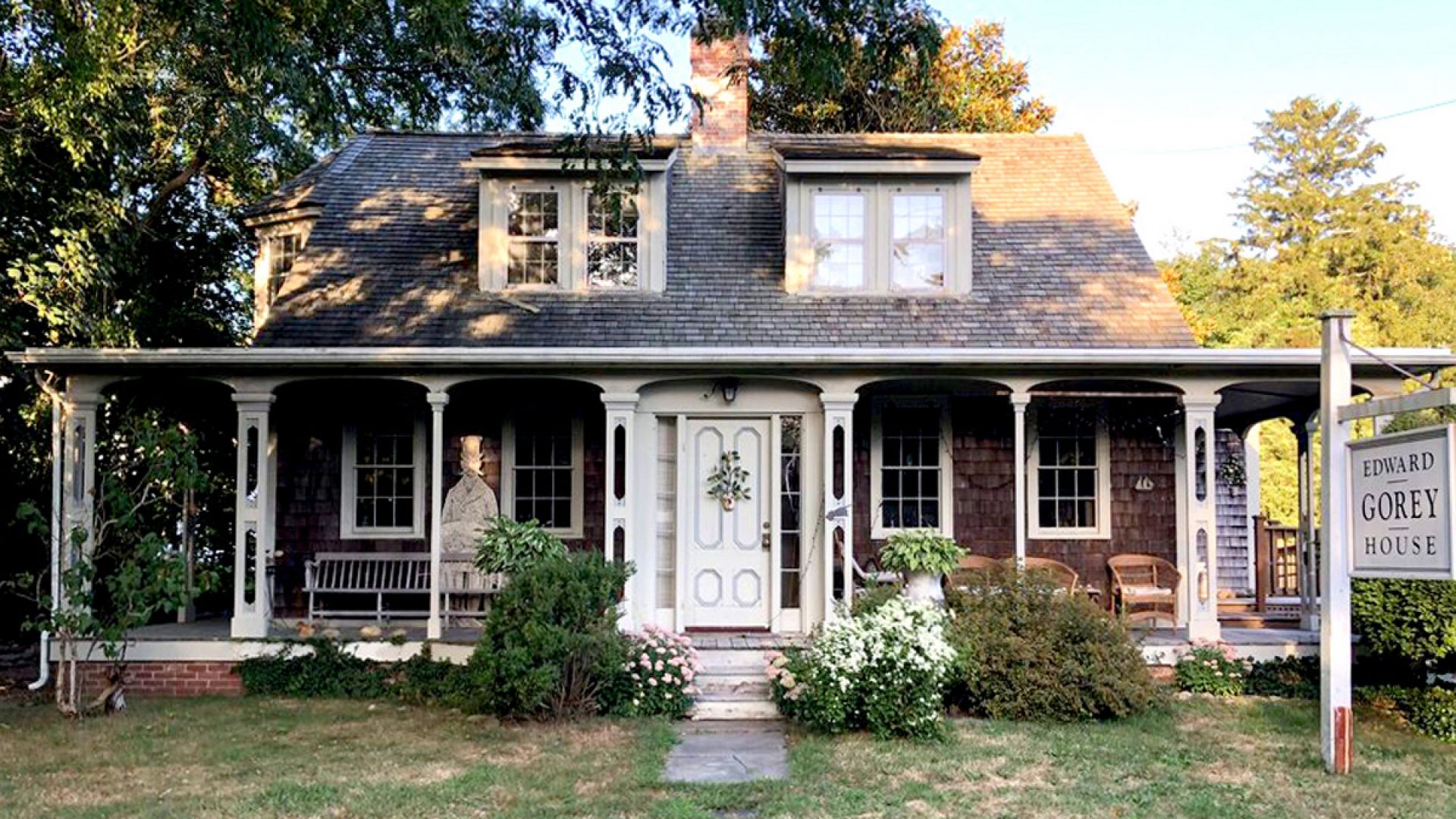The Edward Gorey House Tour
Product ID: 78980
Supplied by: Edward Gorey House
The Edward Gorey House celebrates and preserves the life and works of Edward Gorey, an American author, illustrator, playwright, set, and costume designer. As you walk through the house, you will see displays of Gorey’s diverse and extraordinary talents and distinct personality. The house also honors Gorey’s passion for animals and raises awareness about animal welfare issues.
Highlights
- View original works by Edward Gorey
- Explore rotating themed exhibits each season
- See personal items, letters, and rare books from Gorey’s collection
- Learn about Gorey’s support for animal welfare
- Tour the home and studio of a beloved American illustrator
What's included
- General admission to the Edward Gorey House
- Access to permanent and seasonal exhibits
- Self-guided tour through the artist’s former home
- Guided tours (available during select events only)
- Gift shop purchases
- Food and beverages
Additional Information
Open seasonally from April through December 2025 Hours
April 10 – July 6
Th-Sat — 11 am - 4 pm
Sun — 12 pm - 4 pm
Summer Hours:
July 9th to October 12th:
Wednesdays through Saturdays, 11am to 4pm,
Sundays, noon to 4pm.
October 17 – December 28
Fri & Sat — 11 am - 4 pm
Sun — 12 pm - 4 pm
Recommended for ages 10 and up
Wheelchair accessible on the first floor; stairs required for second floor
On-site gift shop with Gorey-themed books, prints, and collectibles
Photography is allowed without flash
Cancellation policy
If you need to make changes or cancel reservation, you will need to do so no later than 24 hours in advance.
Know before you go
Allow 1 to 1.5 hours for your visit
Comfortable shoes are recommended for exploring the historic home
Check the museum calendar for special exhibits or events
Free on-site parking is available
Last admission is typically 30 minutes before closing
Visitors are welcome to enjoy the garden area during their visit
Overview
The Edward Gorey House is a unique museum located in the late artist and author’s former home in Yarmouth Port, Massachusetts. Celebrating the life and legacy of Edward Gorey, known for his darkly humorous and eccentric illustrations, the museum offers a deep dive into his creative mind. Guests can explore a variety of Gorey’s original artwork, rare books, personal belongings, and seasonal exhibits that change each year. The house also honors Gorey’s advocacy for animal welfare and includes displays related to his charitable efforts. The intimate setting provides fans and newcomers alike with an engaging and artistic experience unlike any other.









